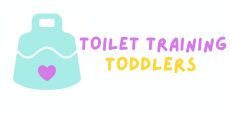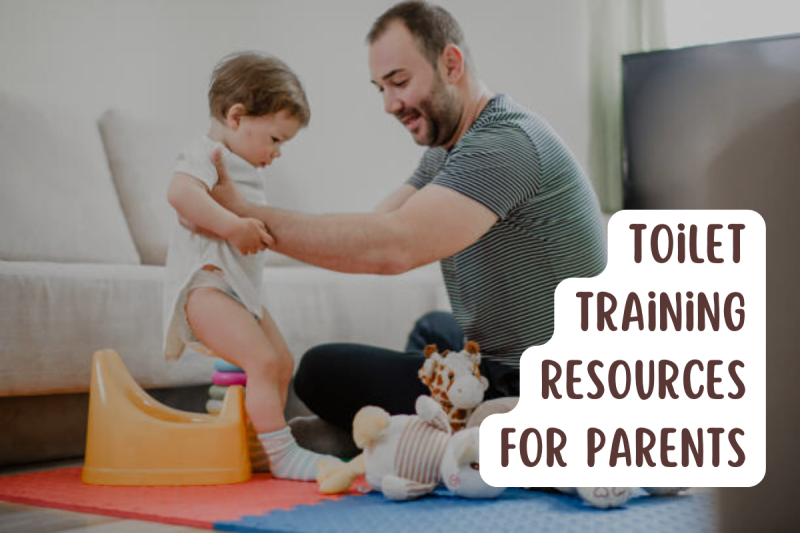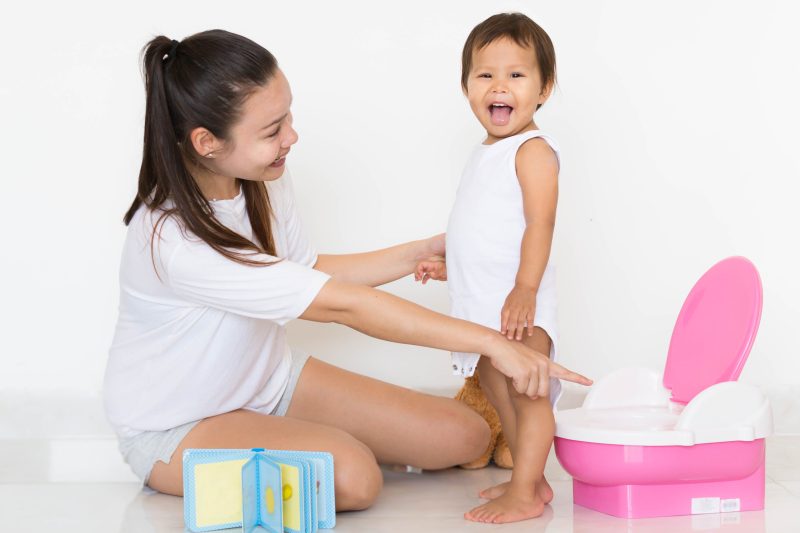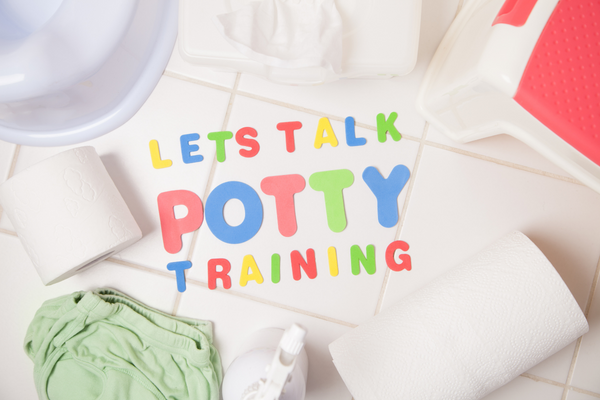As a parent, you know that potty training can be a challenging and often messy task. Luckily, many helpful resources can make the process smoother for you and your child.
Below, you can find many practical tips and book suggestions to help you navigate this important milestone confidently and easily, so let’s dive right in.
Potty Training Resources for Parents: 5 Books You MUST Read!
Every parent should consider reading the following books when potty training their child. These provide a range of approaches and strategies to help you find the one that works best for your family.
1. Oh Crap! Potty Training
As mothers, we can confidently say that Jamie Glowacki’s Oh Crap! Potty Training is a must-read for any parent struggling with toilet training their preschooler.
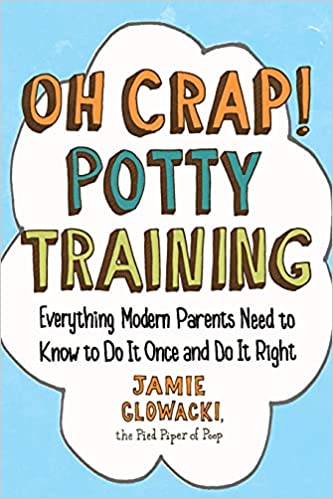
Glowacki’s six-step plan has proven successful for tens of thousands of kids and their parents, which immediately gives us confidence in her expertise.
Even better, she dispels the myth that potty training should happen later rather than sooner, clarifying that most kids can start training between 20-30 months.
Overall, Oh Crap! Potty Training is a game-changer for parents looking to get their kids out of diapers and onto the toilet. With Glowacki’s expert guidance and humor, it’s the perfect book to help parents through potty training and make the transition as smooth as possible.
2. Potty Training in 3 Days
We highly recommend Potty Training in 3 Days for any parent looking to quickly and effectively toilet train their child.
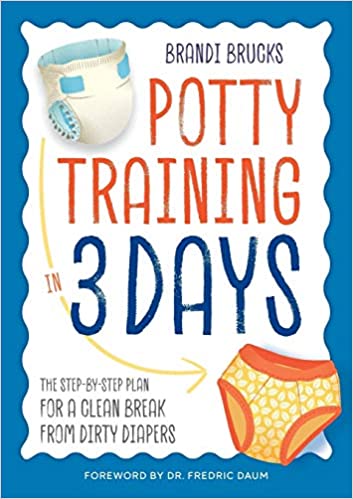
This step-by-step plan is filled with expert advice from thousands of cases, making it easy for parents to help their child transition from diapers to using the toilet.
Additionally, the book provides insight into a child’s thought process and helps parents recognize when their little one is ready for potty training.
As mothers, we know firsthand how stressful potty training can be, but this book provides parents with ways to stay calm and handle every accident with ease.
In short, Potty Training in 3 Days is a comprehensive and effective guide that covers everything you need to know to successfully toilet-train your child. If you’re looking to say goodbye to diapers, this book is worth the read.
3. Dino Potty
Dino Potty is a fun and engaging way to teach kids about potty training.
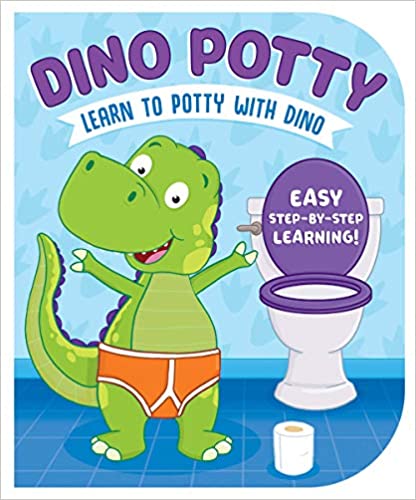
The story follows a friendly dinosaur who learns how to use the potty and wear his brand-new underwear, making it relatable and enjoyable for children.
The creative rhymes and exciting illustrations make this book a wonderful resource for parents looking to teach their toddlers all potty training steps, including flushing the toilet, washing hands, and more.
What’s even better is that the book normalizes accidents and shows that it’s okay to make mistakes.
Overall, Dino Potty is a fantastic resource for parents looking to make potty training fun and interactive for their children. It’s a book worth adding to your collection.
4. Potty Time With Elmo
With over 2.3 million copies sold, Potty Time with Elmo is a proven favorite among parents and kids. The interactive buttons allow for hands-on engagement, making it a stimulating experience for young readers.
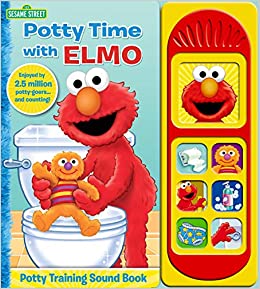
Additionally, the multisensory reading experience, which includes matching pictures to play-a-sound buttons, can help build concentration and encourage children to want to use the potty.
Elmo is a beloved character, and his encouraging words and fun flushing and washing sounds make the learning process enjoyable for children.
This book is a great addition to any family’s potty training toolkit, as it helps take the stress out of the process and makes it a fun and positive experience for everyone involved.
5. Let’s Go to the Potty!
Let’s Go to the Potty is a delightful and inclusive potty training guide for toddlers aged 1 to 3. With colorful illustrations and a catchy potty song, this book makes learning to use the toilet fun and easy.
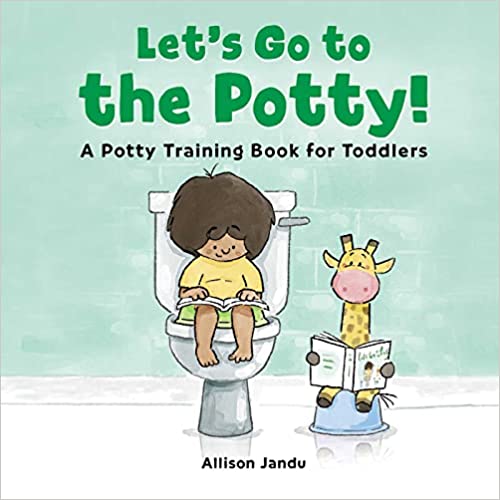
The age-appropriate content and on-the-job-potty training approach make it a great resource for parents looking to support their little ones during this important transition.
5 Practical Tips for Potty Training
Here’s a list of practical tips for potty training:
1. Start at the Right Time
It’s important to wait until your child is physically and emotionally ready to start potty training. Signs of readiness include showing an interest in the bathroom, being able to communicate basic needs, and having longer periods of dryness.
2. Get the Right Equipment
Ensure you have a potty chair or seat that fits on your toilet and plenty of underwear and training pants. Consider using rewards like stickers or small treats to motivate your little one.
3. Establish a Routine
Set regular times for your child to sit on the potty, such as after meals or before bedtime. Also, encourage them to use the potty regularly, but don’t force it.
4. Be Patient and Consistent
Potty training can take time, so it’s important to be patient and consistent with your approach. Be positive and encouraging, and celebrate even small successes.
5. Have a Plan for Accidents
Accidents will happen, so it’s important to show understanding. Stay calm, clean up the mess, and encourage your child to keep trying.
Remember, every child is different, and what works for one may not work for another, so try different strategies until you find what works for you and your toddler.
Research and Studies: What Do They Suggest
Here is a study supporting the child-oriented approach to toilet learning.
According to this approach, a child should be physically and mentally prepared for the process. The physician must consider their developmental milestones, including their motor, language, social skills, and relationship with their parents.

The study provides a readiness checklist for toilet learning, which includes the child’s ability to walk to the potty chair, sit on it with stability, and control their bladder and bowel functions.
Additionally, it recommends that parents follow their little one’s cues to move from one stage to the next and emotionally prepare themselves for inevitable accidents. Finally, parents should use positive reinforcement to encourage their kids and show them how to use the toilet.
Closing Thoughts
We hope you found this guide helpful and informative. With patience, persistence, and the right tools, you can help your child develop the skills to become more independent and confident.
So, whether you choose a potty training book or a more hands-on approach, we wish you the best of luck on this exciting journey!
